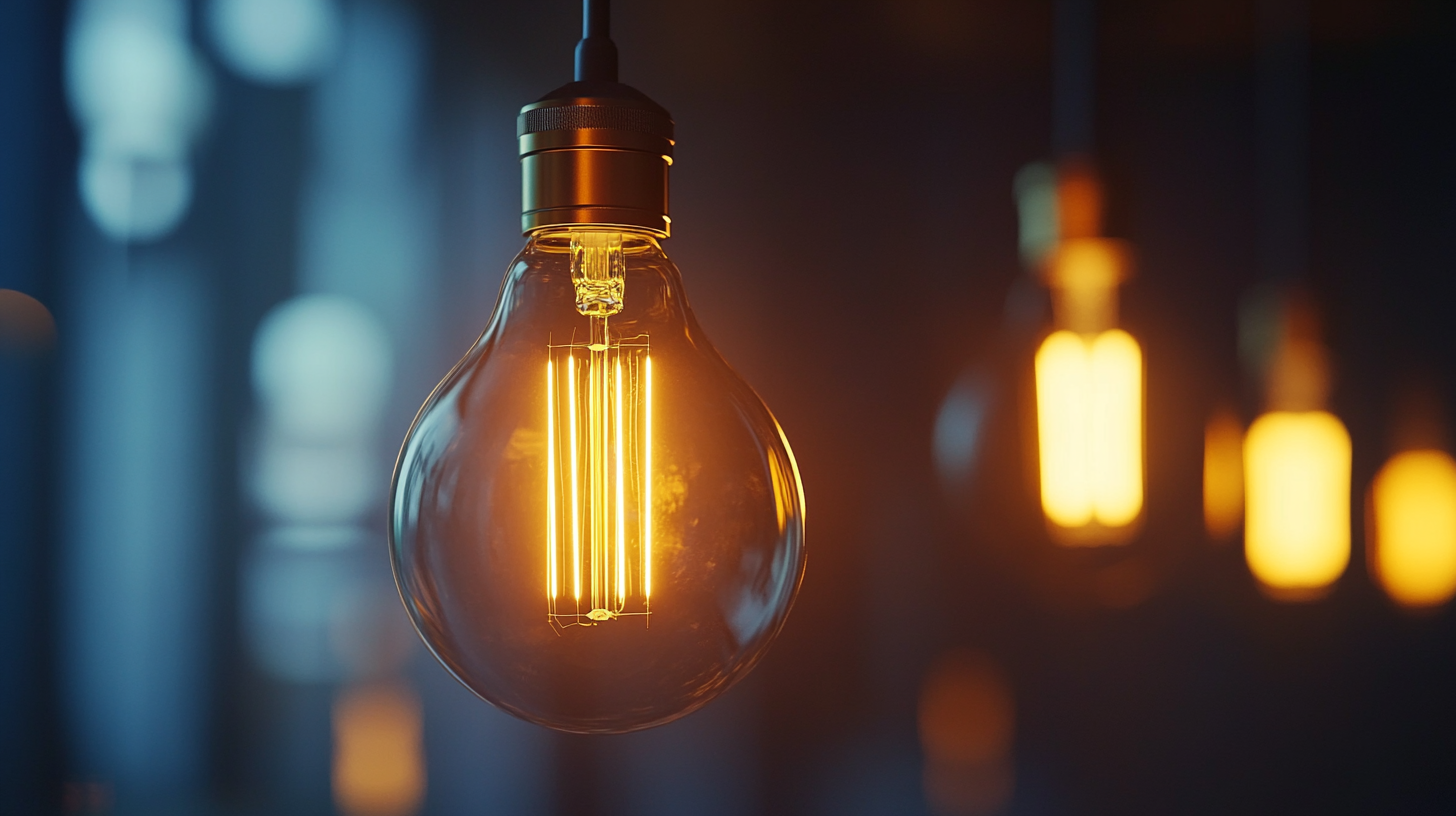Innovations Shaping the Future of Industrial Lighting in 2025
As we look ahead to 2025, the landscape of industrial lighting is set to undergo remarkable transformations driven by innovative technologies and sustainable practices. Industrial lighting has long been an essential component in enhancing workplace safety, productivity, and energy efficiency. However, advancements in smart technologies, automation, and eco-friendly materials are propelling the industry into a new era, reshaping how businesses approach illumination in industrial settings. This evolution not only addresses traditional challenges but also opens up new pathways for enhanced operational performance.
The integration of smart lighting solutions, along with the growing emphasis on sustainability, presents a compelling opportunity for industries to rethink their lighting strategies. In this blog, we will explore the key innovations set to redefine industrial lighting in the coming years, from the rise of IoT-enabled systems to the implementation of human-centric design. By understanding these trends and their implications, businesses can better prepare for the future, ensuring that their industrial lighting solutions not only meet current demands but also align with the vision of a more sustainable and efficient industrial environment.

Emerging LED Technologies Transforming Industrial Lighting Solutions
The industrial lighting landscape is undergoing a profound transformation, driven largely by emerging LED technologies. As we approach 2025, these innovations are set to enhance efficiency, sustainability, and aesthetic appeal in various industrial settings. The shift to LED lighting is not merely about swapping out bulbs; it represents a comprehensive rethinking of how light can be utilized to optimize operations and improve working environments. One of the standout features of modern LED technologies is their incredible energy efficiency. Compared to traditional incandescent or fluorescent lights, LEDs consume significantly less power, which translates to lower utility bills for industrial facilities. This efficiency not only reduces operating costs but also contributes to larger sustainability goals by minimizing the carbon footprint of industrial operations. Furthermore, advancements in smart LED systems allow for dynamic lighting adjustments based on real-time needs, ensuring that energy is used only when and where it is needed. Quality of light is another critical aspect that LEDs are revolutionizing. The latest LED fixtures offer improved color rendering and brightness control, enhancing visibility and safety in workplaces. For industries where precision is paramount, such as manufacturing and assembly, the ability to adjust color temperatures and intensities helps create an optimal working atmosphere. Additionally, with innovations like tunable white lighting and integrated controls, employees can benefit from environments that reduce eye strain and promote well-being, leading to increased productivity and satisfaction. As we look ahead to 2025, the convergence of LED technology and smart systems promises to reshape industrial landscapes, fostering innovation and driving performance in ways we are just beginning to understand. Embracing these changes not only presents opportunities for cost savings and efficiency but also positions industries as leaders in sustainability and employee welfare.

The Role of Smart Lighting Systems in Enhancing Energy Efficiency
As we move towards 2025, the industrial lighting sector is on the brink of a significant transformation, largely driven by advancements in smart lighting systems. These systems harness the power of Internet of Things (IoT) technology to optimize energy consumption and enhance operational efficiency. By integrating real-time data analytics and automated controls, smart lighting systems can adjust brightness based on occupancy, ambient light levels, and specific operational needs, thereby minimizing energy waste.
One of the most notable benefits of smart lighting is its role in increasing energy efficiency across industrial facilities. Traditional lighting systems often operate under fixed schedules, leading to unnecessary energy consumption during off-peak hours. In contrast, smart systems utilize sensors and timers to ensure lights are only active when needed. For instance, motion sensors can detect the presence of personnel in a space, automatically activating or dimming lights accordingly. This adaptive approach not only reduces energy bills but also extends the lifespan of lighting fixtures, further contributing to sustainability goals.
Moreover, smart lighting systems can facilitate data collection that aids in identifying patterns and anomalies in energy usage. This feedback loop enables facility managers to make informed decisions about energy consumption and implement strategies for further efficiency improvements. By utilizing advanced lighting technologies, industries are not just minimizing costs but also contributing to a greener future—an imperative in today’s eco-conscious landscape. In the quest to enhance energy efficiency, smart lighting systems are proving to be a pivotal innovation in the industrial sector.

Advancements in IoT Connectivity for Real-Time Lighting Control
As we move towards 2025, the evolution of industrial lighting is being significantly influenced by advancements in IoT connectivity. The integration of intelligent sensors and devices into lighting systems allows for real-time monitoring and control, optimizing energy usage and enhancing operational efficiency. These IoT-enabled lighting solutions are not just about illumination; they encompass a comprehensive approach to environmental management, providing insights into energy consumption patterns, occupancy levels, and even equipment performance.
Real-time lighting control powered by IoT facilitates a dynamic response to changing conditions within industrial environments. For example, smart lighting can adjust automatically based on the presence of workers, natural light levels, or task requirements. This adaptability not only improves the working conditions for employees but also minimizes waste and reduces operational costs. With predictive analytics, managers can foresee maintenance needs and inefficiencies before they become significant issues, ensuring uninterrupted operations.
Moreover, the convergence of IoT with advanced data analytics is reshaping how industries approach safety and compliance. By continuously gathering and analyzing data on lighting conditions, companies can ensure that their environments meet regulatory standards while also promoting a culture of safety. As we look ahead, the promise of IoT in industrial lighting will undoubtedly lead to smarter, safer, and more sustainable workplaces, positioning organizations to thrive in an increasingly competitive landscape.

Sustainable Practices and Their Impact on Industrial Lighting Design
As industries evolve towards more sustainable practices, the landscape of industrial lighting is being dramatically reshaped. According to a recent report by Research and Markets, the global industrial lighting market is expected to reach $14 billion by 2025, with a significant emphasis on energy-efficient solutions. This shift is largely driven by environmental regulations and a growing corporate commitment to reducing carbon footprints. Sustainable lighting solutions, such as LED technology, are leading the way, offering up to 80% greater efficiency compared to traditional lighting systems.
The impact of sustainable practices on industrial lighting design is profound. For instance, the integration of smart lighting systems, which can be controlled and adjusted based on real-time data, is becoming increasingly prevalent. A study by Lighting Research Center indicates that smart lighting can reduce energy consumption by as much as 60% in industrial settings. Moreover, features like daylight harvesting, where natural light is utilized, are not only enhancing energy efficiency but also improving employee well-being and productivity.
Furthermore, the move towards sustainability is fostering innovations such as the use of recyclable materials in lighting fixtures and the development of Circular Economy principles in lighting design. The International Energy Agency reports that adopting circular economy practices in industrial lighting could reduce waste by 50% over the next decade. As industries increasingly recognize the dual benefits of ecological responsibility and cost savings, the future of industrial lighting in 2025 looks not only brighter but also greener.
Innovative Design Approaches for Customizable Lighting Solutions
In the rapidly evolving realm of industrial lighting, innovative design approaches are paving the way for customizable lighting solutions that cater to the diverse needs of various industries. As we move toward 2025, the emphasis on adaptability and personalization is becoming more pronounced. Industrial spaces no longer adhere to a one-size-fits-all lighting scheme; instead, they embrace tailored solutions that enhance functionality while promoting efficiency.
One of the most transformative approaches in industrial lighting design is the integration of smart technology. This aspect not only allows for dynamic control over lighting settings but also facilitates responsiveness to the specific tasks being performed in a workspace. For instance, customizable LED systems can adjust their intensity and color temperature based on the time of day or the presence of personnel, significantly impacting productivity and energy consumption. By combining automation with user-centric design, industries can create responsive lighting environments that foster better working conditions.
Moreover, the trend towards modular lighting systems is gaining momentum. These systems enable businesses to easily reconfigure their lighting setup based on changing operational needs or aesthetic preferences. With components that can be added, removed, or swapped out, companies can ensure that their lighting infrastructure evolves in tandem with their growth. This level of customization not only enhances the versatility of industrial spaces but also supports sustainability efforts by optimizing energy use and reducing waste. Overall, the future of industrial lighting is poised to be defined by innovative designs that prioritize adaptability and user experience.

